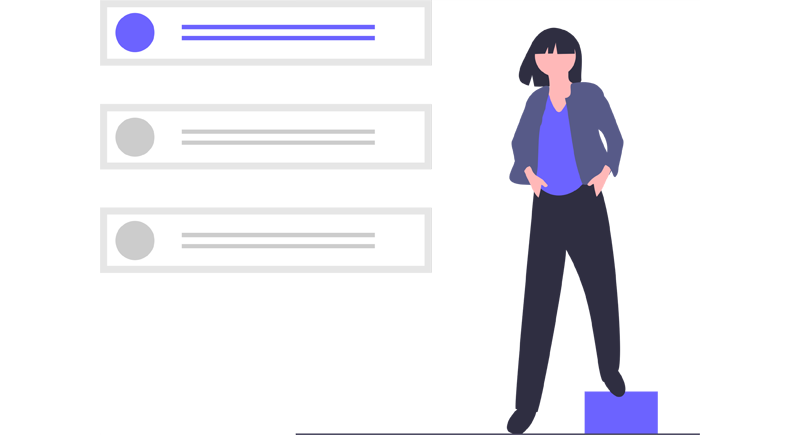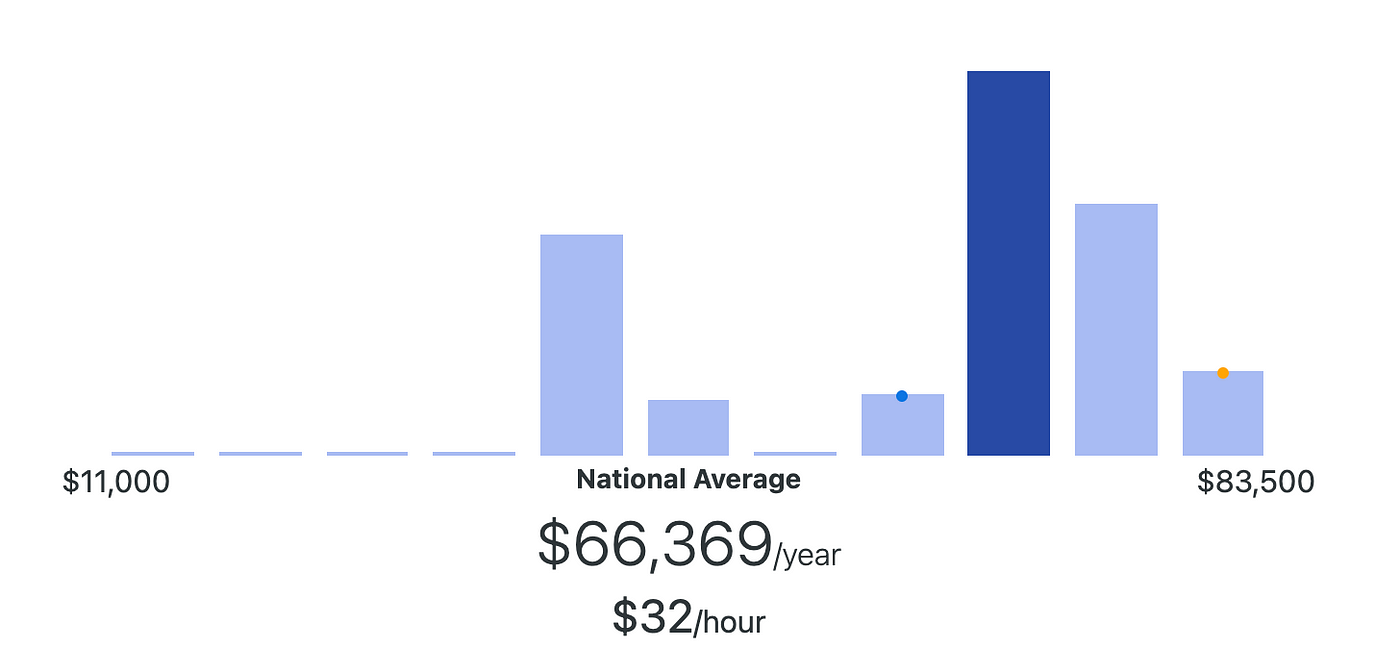how much does a junior ux designer make

3 Things to Consider When Looking for Your First UX Job
![]()
So, here you are, on the hunt for your first full-time UX designer job. Perhaps you just wrapped up college or a certificate program and you're excited to share your skills but aren't sure where to start your search.
There is so much to consider when looking for any job, but if you're new to the UX field, it may feel even more overwhelming. You're probably considering a variety of factors like which cities to search in, what size companies, salary, experience, growth opportunities, and employee benefits.
If that sounds familiar, you need to read this article. It will cover the top 3 things to consider on the UX designer job hunt and give you practical tips to make your search a successful one.
Choose the City You Want to Work In
Before you start looking for your UX design job, you first need to decide where you want to live and work. You may be happy with your current, in which case, you already know where to look.
But if you have the opportunity to go elsewhere, it's worth checking out a few of the best cities in the US for UX designers to get started.
The first thing to remember is that the UX design field is popular and growing. Glassdoor ranked the UX designer job in the top 50 best jobs in America for 2020 meaning that there is definitely demand for the unique skills a UX designer brings.
Yet, it's important to keep a few things in mind, especially if you're looking for a junior UX designer job. Even though you've got the basic skills for conducting user research, prototyping, and testing, your experience in those areas may affect where you choose to start your career.
Check out these tips on how to choose a city for a UX design career:
1. Number of jobs available
When there are numerous jobs available in a certain field, it's a good sign that there's plenty of job opportunities in that location. For UX designers, there are many options, particularly in larger cities like Seattle, WA, and Chicago, IL, where there is a good mix of large tech firms and smaller start-ups.
In addition to desiring junior positions, you also want to see if there are more advanced or specialized UX positions such as a UX copywriter, UI designer, or UX researcher. Cities that have growth opportunities could be a great place to build your career without having to move around.
2. Junior UX designer salaries
No matter what type of job you're looking for, salary is one of the first things you want to know. The average base salary for a junior UX designer in the U.S. according to ZipRecruiter is $66,369, but that number can vary depending on the city you're seeking a job in.

For example, Chicago appears to be a hot market for UX design jobs, and the average salary for a UX designer there is $67,941 and even higher in tech hubs like the San Francisco Bay area.
Evaluating the average salary for UX design jobs in cities also helps you see the opportunities for more economic growth, for both the industry and specific roles. A city with little change in salary between positions, or fewer advanced positions available, may signal a city with less long-term job potential.
3. Resources available to UX designers
As a UX designer at any level, it's important to continue your education and training. While there are many online learning opportunities like UX courses and bootcamps:
You may find it extra beneficial to live in a city with a thriving UX design community. For example, if you plan to move to NYC, you can join one of many local NYC events. You don't have to visit meetups in person because many (like NYC UXD) are held online.
A community with other UX designers and similar jobs will give you the opportunity to network with others, learn about opportunities in the area, or even find a mentor to work with.
4. City growth
One more area to look at when choosing a city to start your UX design career is how the city has recently grown or is projected to grow. The U.S. Census reported in 2019 that population growth surged in cities like Austin, TX, Seattle, WA, and San Antonio, TX.

Cities experiencing a period of growth often have more job opportunities as the industry works to keep up with the pace of growth. Additionally, cities that play home to tech giants and the tech industry may offer further job opportunities. Austin is a great example as it has become a hub for companies like Apple, Amazon, and Dell.
If a city is growing and adding tech jobs, it's definitely one to consider.
Choose an Employer with UX Design Opportunities
As a junior UX designer, you're probably looking for an entry-level position where you can continue to hone your skills.

But choosing an employer with additional opportunities is crucial for advancing your career.
How do you know if they have opportunities? Companies with more opportunity are likely those who:
- Focus on providing the best possible experience for their customers,
- Aim to create innovative products,
- Offer professional growth for their employees.
Check our tips for UX design interviews to increase your chances for success.
Remote Work Options
More and more employers are offering remote work opportunities, particularly in tech industries like UX design where much of the work and communication can be done virtually. As the COVID-19 pandemic continues to affect nearly every industry around the world, many companies are facing the reality that remote work may be here to stay — and that's important to know if you're looking for a UX job.
With so many employers needing to hire remote workers at least until the pandemic ends, you may have more job options available. Many companies still have hiring needs, but since they can't have anyone in-office, they are turning to the vast talent pool that lies in remote workers.
While many people report wanting to work remotely at least some of the time, there are still pros and cons to consider as you look for a UX design job.
Remote work pros
- Reduced costs: You can spend less on commuting, parking, and even living costs if you're able to live in a less expensive place further away from your company's office.
- Flexibility: You may have occasional virtual meetings, but outside of those, you have more freedom to create your own schedule, working earlier, later, or on weekends as you need to, rather than being bound by 8 hours in an office. You can also take your work with you to a co-working space, coffee shop, or even when you're traveling.
- Time savings: Without a daily commute, you may have more time to be productive and devote to work. You may also attend fewer meetings or get less caught up in socializing, giving you more focused time to work, which can lead to more time with your friends and family.
Remote work cons
- Social isolation: You may have fewer desk visits from co-workers, but you may also find that you're missing out on valuable, face-to-face interaction with other people. For many, more time spent working remotely can lead to added stress, anxiety, and uncertainty.
- Less collaboration: Working remotely makes collaboration more challenging, which is particularly important for UX designers who rely on close collaboration with stakeholders, clients, and other design team members to create great user experiences.
- Loss of routine: Without a daily routine of going to an office, meetings, and tasks, some remote workers may find it challenging to work efficiently.
- Distractions: You may not have office distractions, but many people find their homes equally distracting with kids, pets, and house projects present at all times.
- Lack of resources: Many employers provide easy-to-access office supplies, snacks, and tools to enhance your work. Yet, without an office, some remote workers may not have access to those resources or may need to invest in their own.
Look for these 5 things in UX remote work jobs
The reality is that remote work is increasing and it's likely that you'll be considering jobs that offer work-from-home options. As a UX designer, check that prospective employers have these five things to help you work effectively as a UX designer:
- Collaboration tools: Ask what tools the employer uses for collaborating. There are many options like Trello and Slack to stay in close communication and manage projects and workflows effectively. For designers, tools like Mural and Miro offer live, virtual collaboration that makes it simpler to share ideas.
- Design tools: Learn about which design tools the employer uses and if they offer those to employees. You may not have those tools readily available on your personal devices and want to make sure you can access them easily.
- Equipment: If you are an employee (not a contractor), make sure the company provides adequate equipment to do your job such as a monitor, laptop, software, phone, etc.
- Clear communication: just because you work from home doesn't mean you pause communication. A good UX design job will involve regularly communicating with your team, so be sure to ask about how the team communicates remotely, how often, and with whom.
- Team building: Working remotely can make it more challenging to participate in team-building activities, especially during COVID-19, but employers can still offer virtual activities to build morale and have fun. Ask if the employer does things like virtual happy hours, games, holiday celebrations, or workouts.
Conclusion
The UX design field is exciting and growing, which means plenty of opportunities if you're just beginning your career. With these helpful tips for choosing a city, an employer, and remote work options, you'll have a great start in looking for jobs.
About the author
Kelly Doran is a Senior Content Writer at Neil Patel Digital who is passionate about helping brands tell their stories. Her extensive experience includes writing and editing high-quality content for enterprise organizations in technical, lifestyle, and regulated industries, with special focus on copywriting.
how much does a junior ux designer make
Source: https://uxplanet.org/3-things-to-consider-when-looking-for-your-first-ux-job-c3307667a406